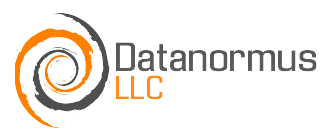“We’ve got lots of runway left!” That’s a declaration often made in casual conversations by confident business executives and economists.
They are referring to the continued post-recession expansion of the U.S. economy. Now more than seven years old, the current expansion is 40% longer than the average of the growth periods since World War II. Dismal scientists (i.e., economists) unceasingly try—and fail—to predict recessions. Even though recessions are always on everyone’s economic horizon, enduring and painful contractions, when growth falls off a cliff, are not only impossible to predict, they are often undetected until the nation is in free fall.
The U.S. economy has slowed in 2016 and may not accelerate in the remainder of the calendar year as the nation ponders its political elections and the uncertain impact of a new administration and Congress in 2017 and beyond. Nonetheless, most economists expect the U.S. to power through the 2016 weakness and extend the current expansion for another two years or so. Staffing and recruiting sales are highly correlated with gross domestic product (GDP). As GDP expands, so does staffing and recruiting. As GDP contracts, so does staffing and recruiting. With weak GDP growth slowing staffing and recruiting sales, and with the probability of a recession increasing by the day (albeit only ever so slightly), professionals in this industry are wisely asking about how much runway remains. The answer is plenty, but not without risks. Success will require investment in innovation, strategic vision, and an understanding of economic and labor market trends, which include both a shrinking supply of and a softening of demand for that distinctly human resource: talent.
Economic Expansion
At 18 months, the Great Recession was the longest and most severe recession since World War II, considerably longer than the average of about 10 and a half months for the 10 prior post-war recessions. At its lowest point in fourth quarter 2008, real GDP had shrunk 5.1% from the start of the recession in December 2007. 1,2
Many economists expected a rapid and robust recovery from the Great Recession, like that of 1957 when real GDP declined 3.6% over eight months and fully recovered in four. Nonfarm employment (seasonally adjusted) returned to its prerecession peak in 20 months. 3
Instead, recovery from the Great Recession was slow and weak. Real GDP did not return to its pre-recession peak until 2013, three and a half years after the recession ended, and nonfarm employment did not recover its losses until 2015, taking almost six and a half years.
Since WWII, the average expansion has been just under five years. The longest expansion was 10 years. At more than seven years, the current expansion is the fourth longest in recorded history, which began in the mid-1850s (see Figure 1). 4 Some economists believe it could break the record of 10 years. 5
What are the prospects for continued economic growth?
GDP growth in the current expansion has been weak. Since the expansion began in July 2009, quarterly GDP has grown at an average annualized rate of 2.1%, well below the 2.8% rate of the 2002–07 expansion (see Figure 2) and significantly lower than the overall average annual rate of 3.4% since 1930, when the U.S. Department of Commerce first began tracking GDP. 6
In 2015, quarterly GDP growth estimates averaged 1.9%, including a marked slowdown to 0.9% in the fourth quarter. That pace continued into 2016 with the U.S. Bureau of Economic Analysis estimating growth at 0.8% in the first quarter and 1.1% in the second. 7
The deceleration led economists to substantially lower their full year GDP projections for 2016. From September 2015 through March 2016, economists surveyed monthly by the Wall Street Journal had
projected annual GDP growth for 2016 in a range from 2.3% to 2.7%. 8 But in April through August 2016, their average GDP forecasts dropped, ranging between 1.8% and 2.1%. 9
In the September 2016 Wall Street Journal survey of economists, their average annual GDP forecast for the year was 1.8%. 10 If they’re correct, that would set the current economic expansion at 2.2 percentage points below the average 4.0% annual growth rate of the prior six expansions from 1960 to 2007. 11
Those same economists are more bullish about 2017, with consensus projections for full-year GDP growth at 2.2%. If they turn out to be correct, that would be about average for the current expansion. And it would push the current expansion into its ninth year—further along the path to becoming the longest expansion ever.
